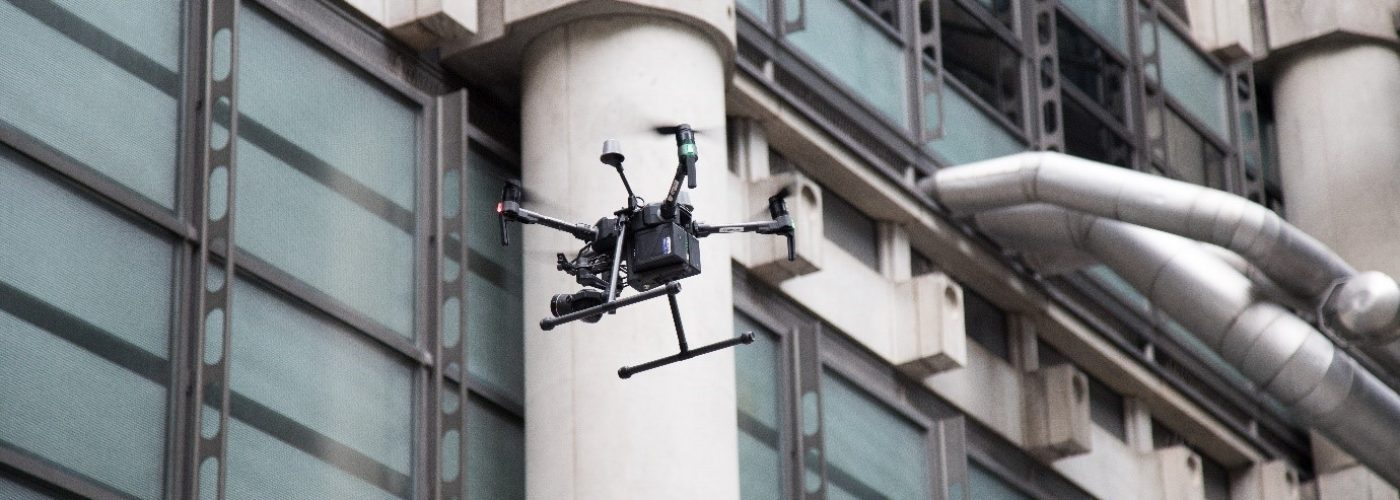The iconic Grade 1 Lloyd’s building in London isn’t your average tall building. To maintain the 88m tall building with its striking 4,500 linear metres of external stainless steel clad pipework and 12,000 square metres of glazing takes a lot of effort and ingenuity.
In September 2020, Lloyd’s, with its partner Arup, commenced the annual survey of the external façade of the Lloyd’s building, aimed at identification of any defects, particularly in those hard to reach places, that require remediation. In previous years, this has been done using rope access (abseiling), however this year for the first time, Unmanned Aerial Vehicles (UAV/done) were used for 80% of the survey. Abseiling isn’t completely eliminated. Arup anticipate that 20% of the façade will still require a “hands-on” examination.
Russell Cole, Leader of Façades UK at Arup said:
“Arup is using VirtuLabs for the UAV flying. Essentially, a façade engineer from Arup will be viewing the screen of the drone operator and directing him. Our two engineers, Graeme DeBrincat and Mitchell Campton, will work in partnership with VirtuLabs to undertake the detailed inspection of the captured data of the façade.”
Terry Blacker, Senior Manager, Facilities at Lloyd’s said:
“The use of drones to survey our building has reduced the risk from abseiling and saved time and cost. The results are excellent. The fact that a Lloyd’s Lab alumni created the insurance policies to allow this to happen also makes us very proud.”
The Lloyd’s Building is one of the first UAV façade surveys undertaken in the City of London and Lloyd’s themselves have enabled this innovative approach to take place. Flock, an insurtech start-up which was a part of the Lloyd’s Lab in 2019, pioneered a flexible insurance product with integrated third parties and invasion of privacy cover has allowed commercial UAV equipment to be used for this type of work. There are also strict rules in place, such as the type of drone being used which must always be in line of sight and have a predesigned automated flight plan.
This is unchartered territory for Lloyd’s and the City of London as well. VirtuLabs needed CAA approval and NATS clearance. Road and pavement closure permits from the Corporation of London were also required when flying over the public realm.
Finally, Arup will use the images from the drone flights to undertake the inspection of the captured images and update the existing 3D virtual maintenance model of this unique heritage asset. This digital building and conditional information model is a unique and project specific interactive tool called Arup Inspect 3D which records not only conditional observations and any change over time but also captures planned maintenance and remediation activities through the life cycle of a building or asset.






